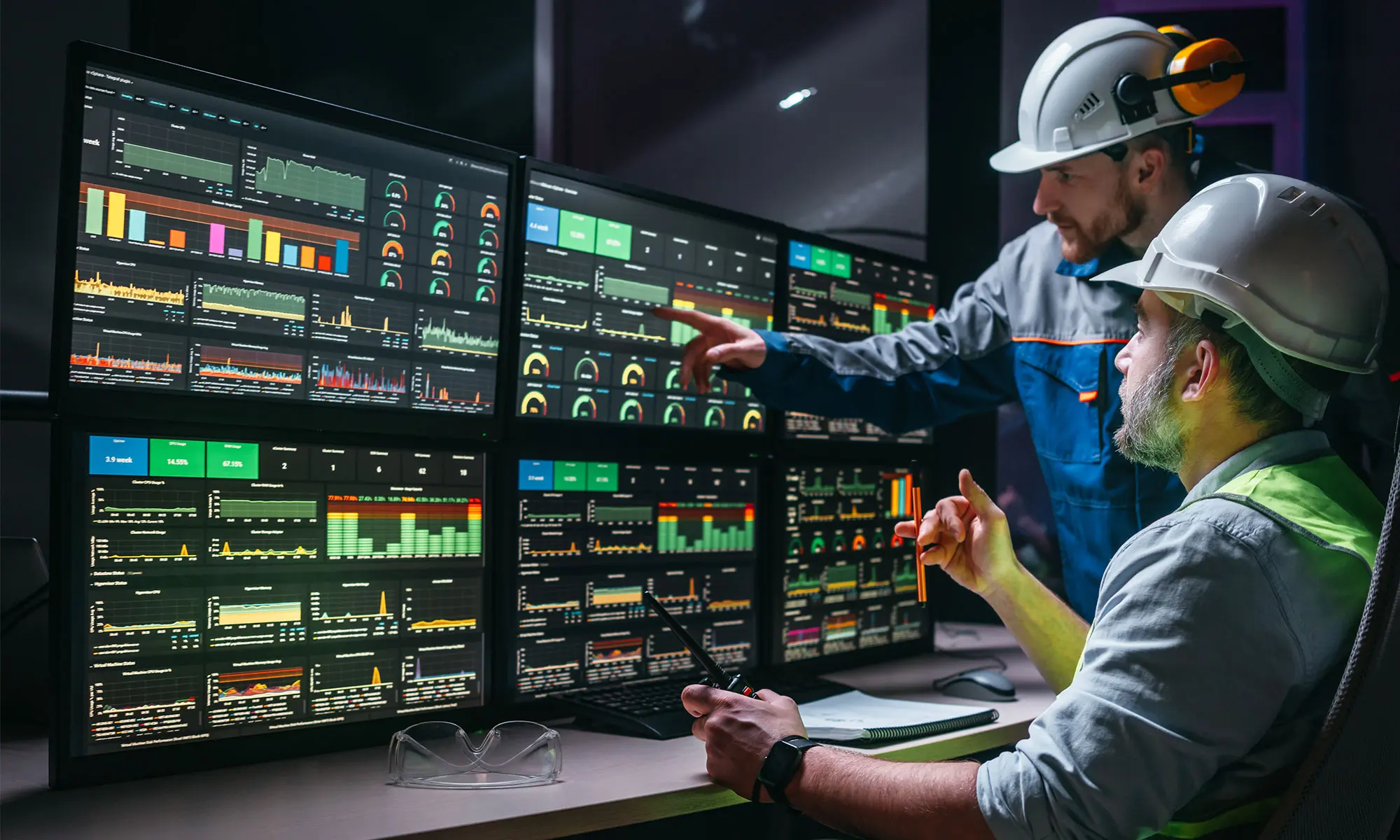The rapidly evolving landscape of facilities management demands an approach that integrates strategic planning with cutting-edge technology to ensure efficiency and sustainability. Integrated facilities management companies are at the forefront of this evolution, leveraging hard facilities management services to streamline operations and enhance client satisfaction.
By adopting a holistic approach, these companies are not only optimizing resource allocation but also setting new benchmarks in performance measurement and continuous improvement. In this blog, we will explore how a well-crafted integrated facilities management strategy can be tailored to meet the specific needs of your organization, ultimately driving success and fostering long-term partnerships.
Strategic Planning for IFM Success
Strategic planning is the cornerstone of an effective Integrated Facilities Management (IFM) approach. A well-conceived strategy not only aligns with your organization’s overarching goals but also drives operational efficiency, cost savings, and long-term sustainability. In this section, we will delve into the critical elements of strategic planning that pave the way for successful IFM execution.
Setting Clear Objectives
Setting clear objectives is crucial in crafting an integrated facilities management (IFM) strategy that aligns with your organization’s goals. This begins with a comprehensive assessment of current operations and identifying areas for improvement.
Establishing specific, measurable, achievable, relevant, and time-bound (SMART) objectives ensures that efforts are focused and progress is trackable. For example, a facilities management company might set objectives like reducing energy consumption by 10% within a year or achieving a 95% satisfaction rate in client feedback. By defining these clear targets, integrated facilities management companies can allocate resources more effectively and prioritize initiatives that deliver the most significant impact.
Additionally, clear objectives provide a framework for performance measurement, allowing for timely adjustments and continuous improvement. Engaging stakeholders in the objective-setting process further ensures that the strategy reflects both employee and client needs, fostering collaboration and commitment across the organization.
Aligning Goals with Business Needs
Aligning goals with business needs is essential for the success of any integrated facilities management strategy. This alignment ensures that the facilities management efforts directly support the broader business objectives, whether that’s enhancing operational efficiency, improving employee well-being, or driving cost savings.
To achieve this, integrated facilities management companies must engage in regular dialogue with key stakeholders, including executives, department heads, and employees. This collaboration helps in identifying the core business requirements and translating them into actionable facilities management goals.
For instance, if a company aims to attract top talent, the facilities management team might focus on creating a more appealing and functional workspace. Additionally, aligning goals with business needs helps in justifying investments in hard facilities management services, as these expenditures can be directly tied to measurable business outcomes. Ultimately, this alignment fosters a more cohesive strategy that supports the organization’s long-term success and growth.
Involving Stakeholders
Involving stakeholders in the strategic planning process of integrated facilities management (IFM) is crucial for crafting a comprehensive and effective strategy. Stakeholders, ranging from executives to facility users, offer diverse perspectives that can enhance the decision-making process.
By engaging these groups early and often, facilities management companies can ensure their strategies are inclusive and reflective of actual needs. Regular stakeholder meetings, surveys, and feedback sessions are valuable tools for gathering insights and fostering collaboration. For example, feedback from maintenance staff might reveal areas where hard facilities management services can be optimized, while input from office employees could highlight amenities that improve the work environment.
Involving stakeholders not only aids in identifying priorities but also builds a sense of shared ownership over the outcomes. This collaborative approach not only enhances strategy development but also increases the likelihood of successful implementation and long-term sustainability of the facilities management initiatives.
Embracing Technology in IFM
In an era where technological advancements are reshaping all business functions, embracing innovative solutions has become essential for integrated facilities management. The integration of technology not only optimizes operational efficiency but also enhances decision-making processes, driving both sustainability and client satisfaction. In this section, we explore the transformative impact of technology on facilities management and how it sets the stage for future growth and adaptation.
Leveraging Data-Driven Insights
Leveraging data-driven insights is a cornerstone of modern integrated facilities management. Data analytics enable facilities management companies to make informed decisions, optimize operations, and enhance service delivery.
By collecting and analyzing data from various sources, such as energy consumption, maintenance schedules, and user feedback, companies can identify patterns and trends that inform strategic planning. For instance, predictive analytics can anticipate equipment failures, allowing for proactive maintenance and minimizing downtime. Additionally, data-driven insights can help in monitoring the performance of hard facilities management services, ensuring they align with predefined objectives.
Real-time data can also enhance responsiveness to immediate issues, improving overall efficiency and client satisfaction. Utilizing advanced technologies like IoT sensors and AI algorithms further amplifies the potential of data-driven strategies, providing deeper insights and fostering continuous improvement. Ultimately, the intelligent use of data transforms facilities management from a reactive function into a strategic asset that supports business objectives.
Implementing Smart Building Solutions
Implementing smart building solutions is transforming the landscape of integrated facilities management, offering enhanced efficiency and sustainability. Smart technologies, such as IoT devices and automated systems, allow facilities management companies to monitor and control building operations remotely.
These solutions enable real-time data collection on energy usage, occupancy levels, and environmental conditions, facilitating informed decision-making and resource optimization. For instance, smart lighting systems can adjust brightness based on natural light availability, reducing energy consumption and costs. Similarly, advanced HVAC systems can improve indoor air quality while maintaining energy efficiency.
By adopting smart building solutions, integrated facilities management companies can not only improve operational efficiency but also enhance user experiences by providing more comfortable and responsive environments. This technological shift supports the growing demand for sustainable practices, helping companies meet regulatory requirements and achieve sustainability goals. Overall, smart building solutions represent a significant advancement in the capabilities and impact of modern facilities management.
Enhancing Communication Tools
Enhancing communication tools is vital for effective integrated facilities management, facilitating better coordination and collaboration among stakeholders. Modern communication platforms offer real-time connectivity, enabling facilities management companies to efficiently manage operations and respond to issues swiftly.
Tools such as centralized management dashboards, mobile applications, and cloud-based solutions allow facility managers to share updates, assign tasks, and track progress seamlessly. These technologies reduce the chances of miscommunication and ensure that all team members are aligned on current priorities and objectives.
Furthermore, enhanced communication tools can improve client interactions by providing transparent reporting and allowing for immediate feedback, thereby boosting client satisfaction. For example, clients can use mobile apps to submit service requests or monitor the status of ongoing projects. By integrating these advanced tools, facilities management companies can streamline workflows, enhance service delivery, and foster a culture of responsiveness and adaptability, ultimately leading to improved outcomes and stronger partnerships.
Continuous Improvement Strategies
To maintain a competitive edge and drive lasting success, continuous improvement within integrated facilities management is crucial. This section focuses on effective strategies that can enhance operational efficiency, elevate service quality, and ensure alignment with industry standards in a constantly evolving landscape.
Conducting Regular Audits
Conducting regular audits is essential for fostering continuous improvement in integrated facilities management. These audits provide a systematic approach to evaluating the efficiency and effectiveness of current operations, identifying areas for enhancement and ensuring compliance with industry standards.
By regularly assessing various aspects of facilities management, such as maintenance practices, energy usage, and safety protocols, companies can uncover inefficiencies and implement corrective actions promptly. Regular audits also facilitate risk management by identifying potential issues before they escalate into significant problems, thereby safeguarding both assets and occupants.
Furthermore, audits offer an opportunity to benchmark performance against industry best practices, helping facilities management companies maintain competitive advantages. Involving external auditors can bring fresh perspectives and unbiased assessments, adding further value to the process. Ultimately, regular audits drive a culture of accountability and excellence, ensuring that facilities management strategies remain dynamic and aligned with organizational goals, while continuously enhancing service quality and operational performance.
Encouraging Innovation and Adaptation
Encouraging innovation and adaptation is vital for the continuous improvement of integrated facilities management practices. In a rapidly changing environment, facilities management companies must foster a culture that embraces new ideas and technologies.
By empowering employees to propose innovative solutions and experiment with emerging technologies, companies can stay ahead of industry trends and address evolving client needs more effectively. For example, implementing pilot projects for new energy-saving technologies can lead to significant operational enhancements and cost reductions.
Additionally, embracing a mindset of adaptation allows facilities management companies to pivot strategies in response to market shifts or unexpected challenges, ensuring resilience and agility. Encouraging open communication and collaboration among teams can further stimulate creative problem-solving and the sharing of best practices. This approach not only enhances service delivery but also positions facilities management companies as leaders in the industry, capable of driving transformative change and delivering sustainable, long-term value to clients.
Training and Development Programs
Investing in training and development programs is crucial for the continuous improvement of integrated facilities management services. These programs equip employees with the skills and knowledge necessary to excel in their roles and adapt to technological advancements and industry changes.
By offering regular training sessions, certifications, and workshops, facilities management companies can foster a highly skilled workforce capable of implementing best practices and innovative solutions. For instance, training in the latest building management systems or sustainability practices can enhance operational efficiency and service quality.
Additionally, development programs can boost employee morale and job satisfaction by providing clear career progression pathways and opportunities for personal growth. This investment not only improves individual performance but also contributes to overall organizational success by reducing turnover and ensuring a knowledgeable team ready to meet client demands. Ultimately, robust training and development initiatives support a culture of continuous learning and improvement, positioning facilities management companies for sustained success in a competitive market.
Final Thoughts
The landscape of Integrated Facilities Management (IFM) is being reshaped by the synergistic integration of strategic planning and technology. As this field evolves, the role of facilities management companies is becoming increasingly pivotal in ensuring efficiency, sustainability, and client satisfaction. By setting clear objectives, aligning goals with business needs, involving stakeholders, and leveraging technology, organizations can optimize their facilities management strategies to achieve significant operational improvements.
Furthermore, continuous improvement through regular audits, innovation, and training programs ensures that facilities management companies can adapt to emerging trends and challenges. This adaptability not only enhances service quality but also fortifies the company’s position as a leader in the industry.
In conclusion, the future of IFM lies in a holistic approach that embraces change, encourages collaboration, and continually seeks ways to innovate and improve. By doing so, organizations can cultivate long-term partnerships and drive impactful results that align with their broader business objectives. As we look forward, the commitment to strategic foresight and technological advancement will continue to define the success of facilities management in a dynamic world.







Be First to Comment